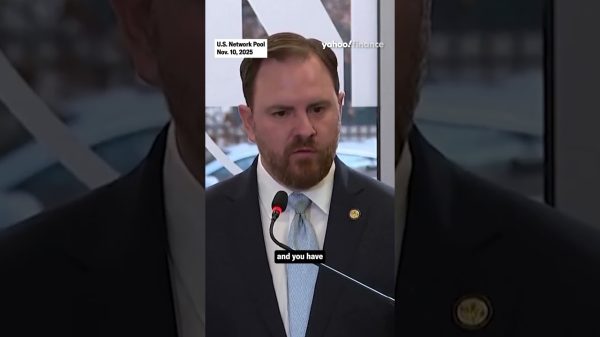Never underestimate the power of dissent, even if the Federal Reserve prefers to present a unified front to the world at large. In a complicated world, however, that only leads to mistakes.
Unity is nice to have, but working through disagreements is how good decisions are made. And it’s hard to call the Fed’s “hawkish pause” this past week a good decision. The central bank left its benchmark interest rate unchanged on Wednesday, and there were no dissents. But this lack of dissent shouldn’t be taken as agreement—far from it.
Looking at the so-called dot plot of rate forecasts shows a pretty wide dispersion among the 11 Federal Open Market Committee members, with two believing that rates should remain where they are through the end of the year, another thinking they should go over 6%, and everyone else in between. The median dot was 5.63%, implying that half the forecasts expect two more rate hikes before all is said and done.
The pause was an odd decision—and one that left many observers scratching their heads. The Wall Street Journal’s Nick Timiraos spoke for many when he told Fed Chairman Jerome Powell at the news conference after the decision, “I don’t lose weight just by buying a gym membership; I have to actually go to the gym.” Powell didn’t really have an answer, beyond stating that “the committee thought overall that it was appropriate to moderate the pace, if only slightly.”
But who needs coherence when you have cohesion? There was certainly a strong case to be made for a pause. U.S. inflation has declined—the consumer price index fell to 4% in May, down from a peak of 9.1% in June 2022—and there are signs that the economy is starting to improve. But the mixed message suggests that there was a little horse-trading going on behind the scenes—a pause in exchange for the hawkish dots. “While there were no dissents, the decision to skip/pause was likely a tough sell to the committee, in our estimation,” writes Carl Riccadonna, chief U.S. economist at BNP Paribas. “ We suspect more hawkish forward guidance may have been a compromise in response to agreeing to a ‘prudent’ pause in June.”
It’s also a decision that could complicate the Fed’s job in the future, particularly as it heads to the next monetary policy decision on July 26, when there is a 74% chance that it will raise rates again, according to the CME FedWatch Tool. “Ultimately, we do not think that the delay of a month makes much difference, but it does make Chair Powell’s job of selling this as a coherent policy at his upcoming presser a little harder,” writes Michael Shaoul, CEO of Marketfield Asset Management.
The current decision is a good example of how the Fed can send mixed messages despite an apparent consensus, but it doesn’t always produce the necessary pushback that particularly complex situations demand. That could result in the central bank missing what should have been obvious, like the return of inflation after the pandemic, and being left to clean its mess. “The Fed thinks it is a strength that they have unanimous votes,” says Jim Bianco of Bianco Research. “I think it is a weakness of the institution.”
If the Fed hoped its hawkish pause would cause the market to reconsider its recent rally, it had another think coming. Even though the dots suggest two more hikes, the
S&P 500 index,
after an initial dip, rallied to finish Wednesday up 0.1%. The week was even better, with the index up 2.6% and notching a fifth consecutive week of gains. Nicholas Colas, co-founder of DataTrek Research, notes that the Fed’s dots still signaled a likely peak in rates in the next six months.
“Since stocks discount events about six months in the future when determining whether to rise or fall on any given day or week, [the Fed’s] revised [forecasts] did not fundamentally change anything the market already assumed was true,” he explains. “In the end, that is bullish for equity markets as long as economic conditions remain stable.”
Now it’s time for the market to take things to a logical conclusion—another bubble. We thought we’d seen the end of those for a while when the stock market tanked last year, wiping out the gains, and then some, in Covid beneficiaries and disruptive tech companies. But the rise of artificial intelligence has given the market more fuel for another big rally, one largely unsupported by fundamentals.
Chris Harvey, head of equity strategy at Wells Fargo Securities, notes that the S&P 500 has already blown through his end-of-year target of 4200 and his “soft landing” target of 4420. Now, 1999-2000 has become the guide, he says. “We fear the Fed’s rate pause will allow uber-cap AI to go ‘next level,’ ” he writes. “ ‘New economy’ stocks will not fade until the economy and ‘old economy’ stocks do.”
Will the Fed be in agreement then?
Write to Ben Levisohn at [email protected]
Read the full article here








